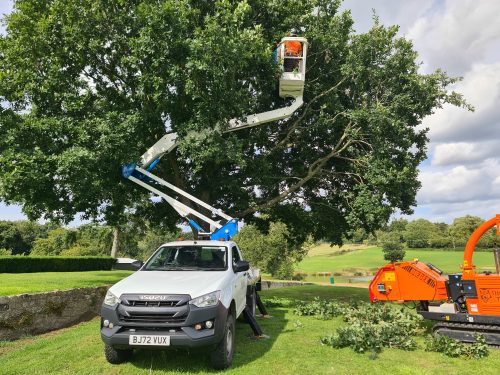 https://www.wilsontreesurgery.com/wp-content/uploads/2024/09/20230807_162313-500x375.jpg
https://www.wilsontreesurgery.com/wp-content/uploads/2024/09/20230807_162313-500x375.jpg
Machinery used in utility arboriculture
Read more
by Wilson Tree Surgery |
Every December, homes around the world follow a very specific tree-related tradition. The Christmas tree. But where does the Christmas tree come from? And why is it such a widely recognised symbol of the festive period? Let’s take a look into this cherished tradition that has deep roots that reach back through centuries and across cultures.
Ancient Roots:
The custom of decorating evergreen trees during winter celebrations predates the modern Christmas holiday. Ancient cultures, including the Egyptians, Romans, and Norse, incorporated evergreen branches and trees into their winter solstice festivities as symbols of life, fertility, and protection against evil spirits.
Medieval Germany:
The story of the Christmas tree, as we know it today, can be traced back to mediaeval Germany. The Germans are credited with bringing evergreen trees into their homes and decorating them with candles. The practice symbolised hope and the promise of life in the cold, dark winter months.
Martin Luther and the Advent of Lights:
Legend has it that the Protestant reformer Martin Luther was inspired by the stars amidst the evergreen trees during winter. He is said to have brought a tree into his home and decorated it with candles to recreate the magical scene. This act is often cited as the origin of the tradition of placing lights on Christmas trees.
Royal Adoption in England:
In the 19th century, the Christmas tree found its way into English royalty. Queen Victoria and her German-born husband, Prince Albert, popularised the Christmas tree in England when they were depicted with their children around a decorated tree. The illustration, published in the Illustrated London News in 1848, captured the imagination of the public and sparked a trend that would soon cross the Atlantic.
Christmas Trees Across the Atlantic:
The Christmas tree made its way to North America through various avenues, with German immigrants bringing their cherished traditions to the New World. By the mid-19th century, Christmas trees were becoming a common sight in American homes, marking the beginning of a tradition that would become an integral part of the holiday season.
Modern Traditions:
Today, the Christmas tree is a symbol of holiday festivities. Families get together to choose and decorate their trees, creating memories and following their own traditions. The tradition has evolved with the times, with artificial trees joining their natural counterparts, and an array of ornaments and decorations reflecting diverse cultural influences.
Symbolism and Significance:
The Christmas tree symbolises hope, life, and the everlasting spirit of joy associated with the festive season. Its evergreen nature represents resilience and the promise of renewal as the world emerges from the cold grasp of winter.
 https://www.wilsontreesurgery.com/wp-content/uploads/2024/09/20230807_162313-500x375.jpg
https://www.wilsontreesurgery.com/wp-content/uploads/2024/09/20230807_162313-500x375.jpg
Read more
 https://www.wilsontreesurgery.com/wp-content/uploads/2024/09/AdobeStock_475873508-500x333.jpeg
https://www.wilsontreesurgery.com/wp-content/uploads/2024/09/AdobeStock_475873508-500x333.jpeg
Read more
 https://www.wilsontreesurgery.com/wp-content/uploads/2024/09/pexels-valiphotos-589802-500x333.jpg
https://www.wilsontreesurgery.com/wp-content/uploads/2024/09/pexels-valiphotos-589802-500x333.jpg
Read more